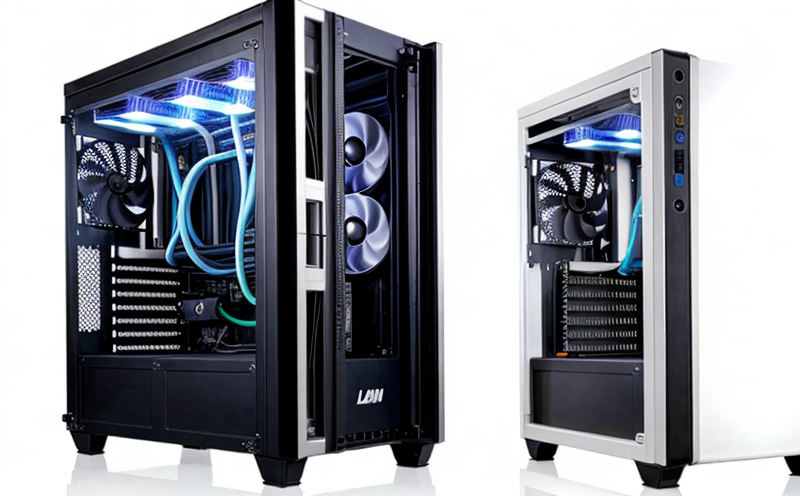BS EN 13779 Indoor Climate Performance Assessment
The BS EN 13779 standard provides a framework for assessing the indoor climate performance of HVAC (Heating, Ventilation and Air Conditioning) equipment. This assessment is critical in ensuring that HVAC systems are not only efficient but also capable of delivering optimal indoor air quality and thermal comfort.
The standard focuses on several key parameters including temperature, humidity levels, airflow rates, and CO2 concentrations within the system. These factors play a crucial role in maintaining occupant well-being and energy efficiency. Compliance with this standard ensures that HVAC equipment is designed to meet modern environmental standards and regulatory requirements, thereby contributing significantly to sustainability goals.
One of the primary benefits of adhering to BS EN 13779 lies in its ability to enhance indoor air quality by ensuring proper ventilation rates which help reduce pollutants inside buildings. Additionally, it promotes efficient use of energy resources through precise control mechanisms that minimize wasted energy during operation. This not only reduces operational costs but also decreases the environmental footprint associated with HVAC systems.
Furthermore, compliance aids in meeting regulatory standards set forth by international bodies such as ISO and ASHRAE (American Society of Heating, Refrigerating & Air-Conditioning Engineers). By following these guidelines meticulously during design phases and subsequent testing procedures, organizations can ensure their products comply not only with local regulations but also with global best practices.
Testing according to BS EN 13779 involves a series of rigorous evaluations aimed at quantifying the performance characteristics outlined in the standard. This includes measuring airflow velocities across various sections of the ductwork; determining temperature differences between supply and return air streams; assessing relative humidity levels throughout different zones within the space being tested; monitoring CO2 concentrations both before and after filtration processes take place.
Specimen preparation plays a key role in preparing accurate samples for analysis. In this context, it involves ensuring that all components of the HVAC system are functioning correctly prior to testing. This includes checking filters for cleanliness, verifying fan speed settings, confirming correct thermostat calibration, among other checks. Once prepared specimens meet these criteria, they may then be subjected to detailed measurement procedures described in BS EN 13779.
Instrumentation used during testing typically consists of high-precision thermometers capable of measuring minute temperature fluctuations accurately; humidity sensors designed specifically for HVAC applications; flow meters that can measure volumetric airflow rates at different points along the ductwork; and CO2 analyzers which track changes in air composition over time. All these instruments work together to provide comprehensive data necessary for evaluating compliance with specified performance thresholds.
Reporting is an integral part of the entire process. After completing all required measurements, detailed reports are generated that summarize findings related to each parameter evaluated under BS EN 13779. These reports serve several purposes including providing evidence supporting claims made about product capabilities; assisting in troubleshooting issues identified during testing; informing decisions regarding potential improvements or modifications needed for future generations of products.
By implementing rigorous testing protocols aligned with international standards like BS EN 13779, manufacturers and installers can ensure their HVAC equipment meets stringent quality benchmarks. This helps build trust among consumers while simultaneously reducing risk associated with non-compliance penalties imposed by regulatory authorities worldwide.
Why It Matters
The importance of indoor climate performance assessment cannot be overstated, especially in today's world where environmental considerations and occupant health are paramount. Properly functioning HVAC systems contribute significantly towards creating comfortable environments that promote productivity and well-being among occupants.
- Enhanced Air Quality: Ensuring adequate ventilation rates helps maintain clean air by filtering out contaminants effectively.
- Energy Efficiency: Precise control mechanisms reduce energy waste, leading to lower utility bills and reduced carbon emissions.
- Compliance with Regulations: Meeting specified performance criteria guarantees adherence to local and international standards.
- Better Occupant Health: Optimal temperature and humidity levels contribute positively towards reducing sick building syndrome occurrences.
In summary, conducting thorough assessments according to BS EN 13779 ensures that HVAC equipment operates efficiently while maintaining high standards of indoor air quality. This approach supports sustainability initiatives by minimizing resource consumption and promoting healthier living spaces.
Environmental and Sustainability Contributions
- Energy Conservation: By optimizing airflow patterns and temperature settings, systems can operate more efficiently reducing overall energy usage.
- Reduction in Carbon Footprint: Lowering the amount of electricity consumed directly translates into fewer greenhouse gas emissions.
- Water Efficiency: Properly designed HVAC systems help conserve water resources by minimizing leaks and ensuring optimal moisture levels within structures.
- Better Waste Management: Regular maintenance schedules recommended by this standard promote proper disposal practices for used equipment parts, preventing improper waste management issues.
The positive environmental impacts of adhering to BS EN 13779 extend beyond just operational aspects; they also influence design choices made early in the product lifecycle. By considering these factors during initial planning stages, manufacturers can create products that have minimal adverse effects on the environment throughout their entire life cycle.
Use Cases and Application Examples
The BS EN 13779 standard finds application across various sectors including commercial buildings, industrial facilities, healthcare institutions, educational establishments, residential complexes, among others. Here are some specific instances where this standard proves invaluable:
- Commercial Buildings: Offices and retail spaces benefit from improved thermal comfort and reduced energy costs.
- Industrial Facilities: Manufacturing plants see enhanced productivity due to better working conditions for employees.
- Healthcare Institutions: Hospitals ensure patient safety by maintaining strict temperature and humidity controls.
- Educational Establishments: Schools provide healthier learning environments fostering student concentration and engagement.
These examples illustrate how compliance with BS EN 13779 can lead to significant improvements in multiple areas beyond mere functionality, making it an essential tool for stakeholders across different industries.





